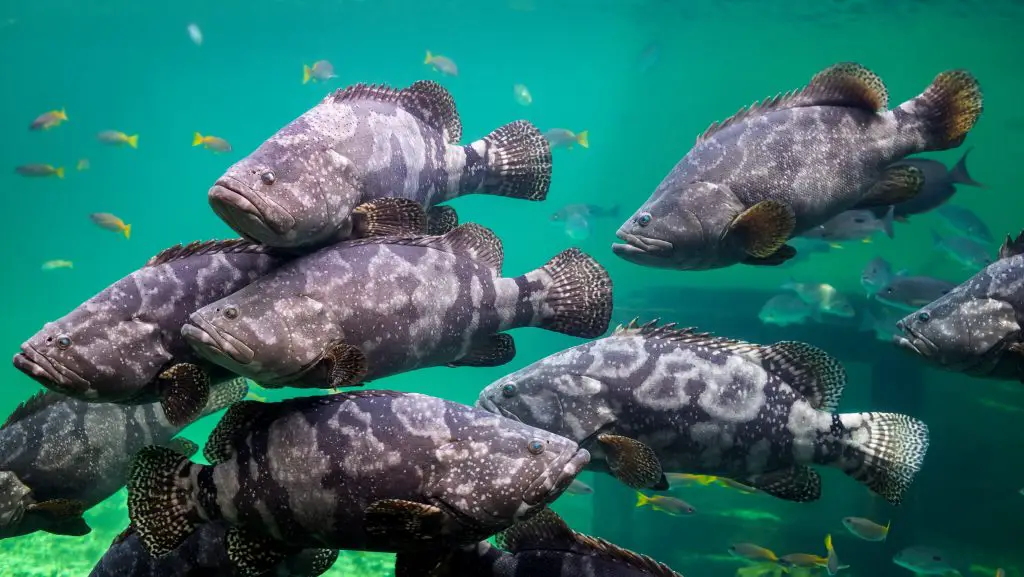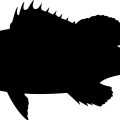Grouper is also a migratory fish and can be found traveling in schools. Grouper are schooling fish and will migrate for food or spawning grounds. In general, they migrate to warmer water temperatures. The grouper migration process depends on their species and the nature of the habitat.
Groupers migrate to find food, but they may not always return to where they were born. If this migration continues and impacts grouper populations where they are collected as seafood, it could have severe implications for the future of this fish species.

Migration of Grouper
The Grouper, Epinephelus crameri, is a large fish in the eastern Atlantic Ocean. They are a popular fish to catch and are known for its strong taste. Grouper is a migratory fish and can be found traveling in schools. Grouper are known to migrate long distances. Some studies have shown that they can travel up to 1,500 miles during migration. They are known to migrate in groups and have been observed migrating together in schools. Studies have also shown that grouper migrate towards the sun and with the current.
How and Why do Grouper Migrate?
Grouper is a popular fish you can find in both salt and fresh water. They typically live in tropical climates but are also found in other parts of the world. They typically migrate to find new areas to live in or to find food. Migration is a natural process for any animal and is an integral part of its survival. When migrating they swim forward with their mouths open. This action sucks water into their mouths, which gives them enough momentum to travel further. Groupers tend to migrate at night when they are more likely to find food.
Groupers are masters of migration, and they migrate for both reproductive and foraging needs. Reproductive migration is essential for the grouper because it helps spread their populations and ensures a healthy gene pool. Foraging migration is also necessary for the grouper to find new food sources.
Where do Grouper Migrate?
The Grouper is a popular fish found in many parts of the world. The grouper is known for its strong jaw and large scales. It can also live in several different water types, making it a popular choice for fishermen. The grouper is a saltwater fish found in warm and cold-water areas. There is an extensive range of this species in the United States, including the Gulf of Mexico and the Florida Keys, as well as the Bahamas, most of the Caribbean, and most of the Brazilian coast. Occasionally, giant groupers have been caught off the coast of Massachusetts and Maine in New England.
What Are the Life Stages of Grouper Fish?
Grouper fish is a type of saltwater fish that lives in tropical and subtropical climates. They have a variety of life stages, including juvenile, adult, and senescent. The juvenile stage is when the grouper is born and grows very quickly. The adult stage is when the grouper has reached its full size and can reproduce. The senescent stage is when a grouper’s health starts to decline, and it may no longer be able to reproduce or survive in the wild.
Is It Best to Migrate While They’re Still Young, or Is It Better to Wait Until They Are Larger So They Can Move More Efficiently?
The answer to this question is a little bit complicated. While there are some benefits grouper experiences while they are still young, there are also some advantages to waiting until they are larger. The main reason for waiting is that groupers can migrate more efficiently when they are larger and can move at a faster pace. More enormous groupers can move faster and cover more ground in their search for food. Additionally, older grouper may be less able to withstand the stress of migration and could become injured or killed.
Do Grouper Migrate as One or in Groups?
Groupers migrate as a group, though they can also migrate as individuals. This is because groupers are social animals and stay together to survive. Most grouper species migrate long distances to spawn, something many anglers are unaware of. Several hundred miles are covered by both gag and Nassau groupers (Mycteroperca microlepis and Epinephelus striatus).
Migration Patterns of Grouper
Grouper, a popular fish, exhibit different migration patterns depending on their location. In the North Atlantic, grouper migrate long distances to warmer waters to spawn. Spawning grouper typically move close to shore, where fishermen can easily catch them. In the Pacific Ocean, grouper migrate shorter distances but in greater numbers than in the North Atlantic. Grouper congregates around reefs and coral patches, feeding on small fish and crustaceans.
How are Grouper Migrations Beneficial to the Ecosystem?
Grouper migrations can benefit the ecosystem because they lead to the distribution of new fish species in an area. By introducing new fish into an area, grouper migrations can help control the populations of other fish species, like lionfish, leading to a healthier ecosystem.
Grouper migrations benefit the ecosystem because they help maintain a healthy balance in the fish population. Grouper migrations also help to disperse larvae and juveniles throughout the water column, which helps to promote a healthy fishery.
Grouper Migrations in Different Habitats
Groupers are generally found in warm, tropical, and subtropical freshwater habitats. However, they have been known to migrate to various habitats, including estuaries, reefs, and inland waterways. There are a few different factors that can contribute to group migrations. Some of these include temperature changes, food availability, predation pressure, and competition from other fish species. Generally, grouper tend to migrate towards warmer water temperatures during winter. This is likely because colder water temperatures can lead to decreased food availability and increased predation pressure.
Regarding food availability, grouper typically prefer prey such as snails and crabs. When these prey items become difficult or unavailable to find in their original habitat, grouper will migrate to locations where they can more easily find them. Migrations can also be triggered by changes in predator populations or environmental conditions. For example, if there is an increase in predators that feed on grouper larvae or an increase in coastal flooding that disrupts the fish’s normal habitat.
Conclusion
Grouper are known to migrate across long distances as well. This is partly due to their diet and lifestyle, which includes feeding on a wide variety of prey items. They are known for their large, flat heads and ability to swim long distances without stopping. However, according to recent reports, grouper may be migrating in ways that could impact their populations. If this migration continues and impacts grouper populations where they are collected as seafood, it could have serious implications for the future of this fish species.











Pingback: How Deep do Groupers Live? | Reel Fishing Guru
Pingback: What is the Difference Between a Grouper and Tilapia? | Reel Fishing Guru